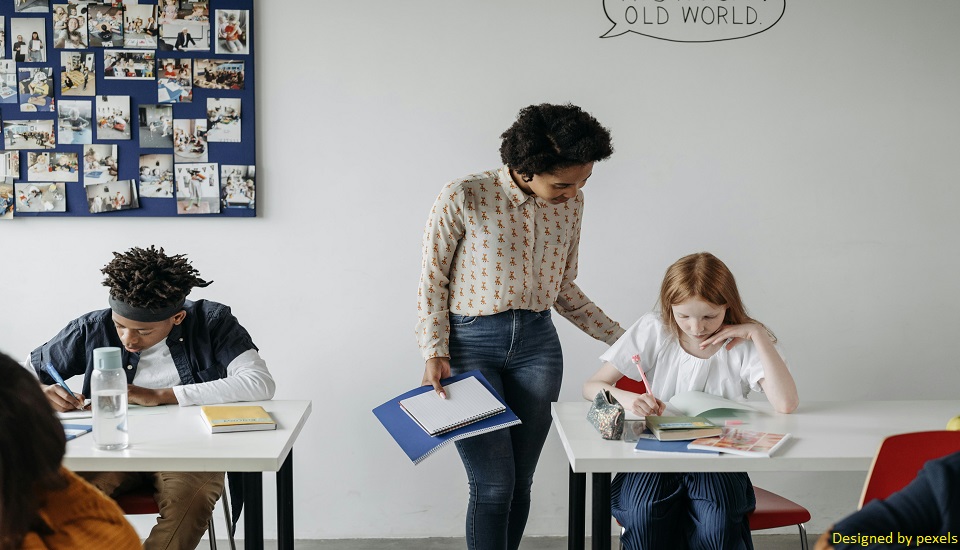How to Make the Most of Student Reflections in Your Classroom
22nd January 2025

Students often work in small groups in classrooms. Even if it is widespread now, it represents a significant change from the majority of the 20th century, when students studied on their own in desk rows. In light of this, it is crucial to take into account how various grouping techniques affect students' learning and standing. From assigning students to groups based on perceived ability to employing flexible groupings—which may involve forming groups at random so that kids anticipate working with and learning from all of their peers—these techniques vary greatly. Here is how student reflections can help educators learn more about their class.
Ways To Set Up Reflection Documents
Here are three tips to get reflection documents from your students:
1. Provide Space For Reflection Process
Reflection too frequently combines these two, and there is something lost when they are not treated separately. The following were the two category names for the columns in the reflection document:
- How do you feel about the work you put into this item and the technique you used?
- What is your takeaway from the outcomes, including the feedback?
Doing this can help teachers understand how students perceive different assessments.
Before you move to the topic, can we ask you a quick question? Do you follow us on Social Media? If not, then you’re missing out on a lot of informative content. We regularly share upgraded educational content, tips, feedback, and more. Check us out by clicking the profiles here - Facebook / Twitter / LinkedIn / Pinterest / Instagram / YouTube
2. Include All Assessments In the Same Document
As educators, you might give your students a lot of formative assessments, summative assessments, etc throughout the year. Considering personal annoyance with fragmentation, this document's goal is to provide all the information in one location so that students may see and consider not just their learnings but also trends and changes.
If organizing the evaluations for the entire year in advance is too difficult, you might complete one of these forms for each semester.
3. Make Sure You Can Access Each Document
Helping students comprehend their progress is one of the main goals of this exercise, but it also helps you as a teacher understand how kids see their growth. To accomplish this, you must have access to the document right away.
You may either:
- Ask each student to share theirs with you and create a ‘Writing Story’ folder in your Google Drive
- Create the document for each student and send it to them separately.
It is also crucial that you explain the purpose of these papers to the class on the day that they are put up.
When To Ask Your Students To Reflect:
If you are confused about when exactly should you ask your students to reflect, take a look at this:
- At the Beginning/End Of Each Year
Begin each year with a conversation on the 'Power of Yet' and mentality. What are you looking forward to in this class? This is one of the reflection questions your students can answer on an online questionnaire. In this class, what worries you the most?
Since you don't want to reveal individual answers, you can use word clouds to get the class talking about their thinking.
- During Learning
You can give students reflection questions in class or as homework when they are learning new concepts.
These questions range from: What is one topic from this section that you understand well enough to teach to a classmate? What has been the least (or most) difficult topic for you in this section? What shocked you about this topic?
- After Assessments
After students answer some of the following reflection questions you can let them fix their errors on tests: Which study techniques did you find most effective for getting ready for the test? What aspect of this exam did you like the most—or the least?
What would you do differently the next time if you weren't satisfied with your score? Do you think that fixing the assessment allowed you to grow from your errors? Allowing students to correct their own mistakes will help them respond with honesty and in great detail.
How Reflections Can Benefit Students?
Here are a few benefits of reflection for students:
1. Self-Awareness
Children may better understand themselves, find their likes and dislikes, and balance their strengths and limitations via the process of reflection.
2. Understanding Others
Children can have a better understanding of their connections with people and what drives them by reflecting on their interactions with friends, family, and instructors.
3. Personal Development
A crucial element for fostering this development is reflection. Encourage your child to reflect on what went wrong, what went right, and how they might use the experience to improve the next time.
4. Building Confidence
Through reflection, kids may build a solid and self-assured knowledge foundation and sense of self that enables them to attempt new things, take on new challenges, and learn from their failures.
Bottom Line
The influence of various student reflection techniques must be taken into account, especially when working with small groups. Teachers who have pursued pre and primary teachers training courses show their dedication to creating a positive learning environment and their appreciation for students' contributions when they take the time to hear what students have to say about their experiences working in small groups and then address their comments.
We believe education should be accessible for everyone. That’s why we don’t charge for our blogs. Find the right course that will help you in your career with us, contact us at - 1800–212–6400. You can mail us at act@asiancollegeofteachers.com.
Written By : Sanjana











